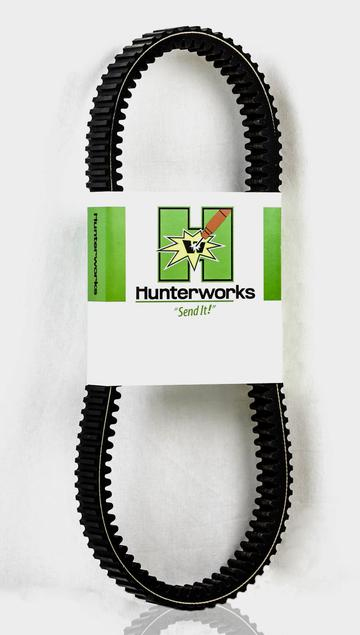Before replacing your belt, see our Best Polaris RZR Belt guide to choose the right one.
Yes, you can it ain’t rocket surgery. You can swap out a Polaris drive belt yourself. No need to fork over your hard-earned cash to a mechanic. Just grab your tools and get to work.
Now, before you dive in, you gotta know what you’re looking for. How do you know when it’s time to replace that belt? Well, first off, keep an eye on the wear and tear. If it’s starting to crack or fray or has glassing it’s time to swap it out.
Buy the right belt with our buying guide on finding your Polaris RZR belt
How To Replace The Drive Belt On Your Polaris RZR
Materials:
- Safety glasses
- Rubber gloves
- Rags
- Maroon scotch brite (See on Amazon)
- 10 millimeter socket
- Belt removal tool (See on Amazon)
- Tusk flex drive clutch cover removal tool (with 5/16 inch socket) (See on Amazon)
- Polaris CVT belt (See on Amazon)

Instructions:
- Use the Tusk flex drive clutch cover removal tool to get into hard-to-reach places. If you don’t have this tool, use a 5/16 inch socket.
- Remove the bolt from the bracket to get the air duct out of the way.
- Take out all the screws in the clutch cover and remove it.
- Use the drive belt removal tool to separate the clutch sheaves and loosen the tension on the belt.
- Grab the belt from the bottom and work it off the driven clutch.
- Rotate the clutch to help pop the belt off and move it around the primary clutch.
- Install the new belt the same way the old one was installed.
- Inspect the old belt by comparing it to a new belt. Look for uneven wear, frayed cords, visible damage, glazing, or hourglassing.
- Clean the clutches by removing any pieces or cords stuck on them.
- Use compressed air to clean off the dust on the clutches, wear a dust mask, and do this outside.
- Inspect the clutch sheaves for damage or glazing by running your fingernail across them. If you feel any deep grooves, replace the clutch. If you see a shiny or dark surface on the sheaves, use scotch brite to clean them up.
- Wipe everything down with a rag.
Note: scuff up the clutch sheaves to avoid running a new belt on a glazed surface. Belt lifespan depends on how the machine is driven, so avoid high heat and install a belt temperature sensor if needed.
Conclusion
So there you have it, amigo. Don’t be afraid to take on this drive belt inspection and replacement yourself. You’ll save some cash and feel like a real grease monkey in the process. And when it comes to Polaris off-road vehicles like the RZR, this drive belt replacement process is pretty much the same.
Related Questions About Polaris RZR Drive Belts
How Do I Know My Polaris RZR CVT Belt Is Worn?
One of the most common injuries that RZR riders face is a worn-out drive belt. You check for glassy sides of the belts. Also, sluggish acceleration or jumping suddenly can be a sign of a worn belt
How Long do Polaris RZR drive belts last?
When it comes to the Polaris RZR, one question that always seems to be on people’s minds is just how long that drive belt can hold out. Will it last you for hundreds of miles of trail riding, or is it more likely to give out on you just when you’re starting to hit your stride?










